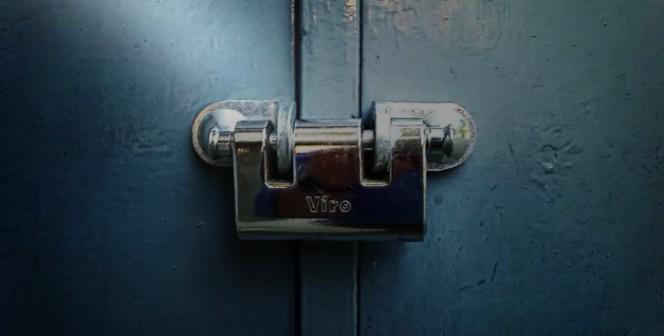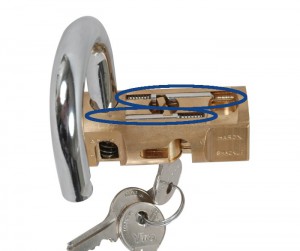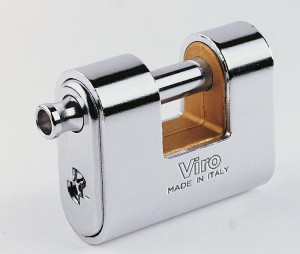After having talked about materials and treatments, in this last (but no less important) blog in the series “how to recognize a good quality lock“, it is time to explore the theme of the padlock mechanism. To make the explanation clearer we will make use of some videos.
Mechanism
A well-manufactured padlock does not have any significant clearance between its moving parts: between shackle and body, between body and plug and especially between pins and key. Poor machining makes the padlock vulnerable; a shackle that is not tightly secured is more easily ripped off.
In order to check that the shackle is more pull-resistant, it is necessary to check for the presence of two symmetrical recesses on the inner side of the shackle itself. These recesses serve to house the latches in the closed position, so that the shackle, when closed, is blocked in two points.
If one of the two latches is missing the shackle is much less resistant and can often be opened with a simple knife-like tool. Unfortunately, some manufacturers of cheap products, whilst using shackles with 2 recesses, only insert one latch in the body, thus giving the illusion of a double lock which is simply not there.
A video of an American locksmith is shown (that we have subtitled for further clarity) which highlights precisely how many cheap padlocks on the market can be immediately opened as they do not have the double locking latch.
The padlock must always be chosen in relation to its fixing points, so that they couple in the most precise way possible to the rod or to the shackle of the padlock. It makes no sense to use fixing points made from materials which are far less resistant than those with which the padlock is made, otherwise the thieves will be able to easily cut or pull off the fixing points without even dealing with the padlock.
This is why, on the basis of the various applications, it is worthwhile, whenever possible, to choose fixing points made with the same materials and which have undergone the same heat treatment as the padlocks.
Such as these or these.
Even the shape of the body has a certain importance. In fact, a square shaped body offer greater possibilities for gripping the padlock with burglary tools, as it can easily placed in a vice or held firm whilst using cutting or drilling tools. For this reason, the best quality locks have rounded shapes and rounded corners.
Moreover, in the padlocks in which the head of the shackle protrudes from the body it is important that this has a programmed breakage point, so that, if an attempt is made to cut or pull off the rod whilst holding the head still, this will break under the force at a point selected by the manufacturer.
This video filmed in the Viro testing laboratory clearly shows this safety feature:


